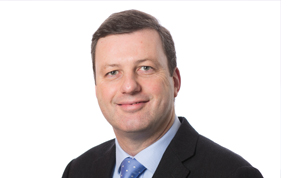‘Very slow’ funding increase for mental health despite surge in demand
A report – Progress in improving mental health services in England – said that between 2016/17 and 2020/21 the proportion of clinical commissioning group income spent on mental health services had only increased from 11.0% to 11.4%, excluding spend on dementia, learning disability and autism services. It described the rate of increase as ‘very slow’, reflecting the pace wet by NHS England’s target.
However, NHS England was likely to meet its commitment to increase annual spending by £3.4bn by 2023/24 compared with 2018/19. However, this has been achieved in cash terms and high inflation will have reduced the real value of the increases. It was also likely to have met commitments on money spent on children and young people’s mental health – although this was made more complex to determine as there was little information on the baseline year’s spending.
But the audit body added that it was difficult to quantify any historic underfunding of services. And while workforce had increased by 22% from 2016/17, demand had increased by twice as much with concern about the acuity of cases. Even though there were plans for service expansion, many people would still encounter ‘treatment gaps – for example, there is an ambition for 1.9 million people to access talking therapies in 2023/24, but this would still only be a quarter of those with diagnosed needs. And it also highlighted issues with mental health estate with rising backlog maintenance and little evidence that enough money to reduce this would be forthcoming.
Gareth Davies, head of the NAO said that the Department of Health and Social Care and NHS England had made clear commitments to improve mental health services, but they had not defined what achieving full parity of esteem for mental health services would entail.
‘It is therefore unclear how far the current commitments take the NHS towards its end goal, and what else is needed to achieve it and match the increasing public awareness and need,’ he said. ‘While funding and the workforce for mental health services have increased and more people have been treated, many people still cannot access services or have lengthy waits for treatment. With demand for mental health services having increased since the pandemic, and being expected to increase further in the coming years, it is vital that Department and NHS England define what is required to meet the growing demand.’
The report made a number of recommendations including:
- The Department and NHS England should clarify what ‘parity of esteem’ between mental and physical health services means in terms of access and service specification, staffing models and funding allocations.
- A long-term mental health workforce recruitment and retention strategy is needed, together with a costed plan which reflects the volume and skills needed to meet future service ambitions.
- Better data is needed to enable understanding of relative cost and cost-effectiveness of services and also to offer greater transparency over capacity, activity, performance and outcomes in community mental health services.
Sean Duggan chief executive of the mental health network at the NHS Confederation, said that demand for mental health services continued to spiral, with the service ‘severely stretched’ following on from the pandemic. He called for the government to continue to ‘fulfil its commitment to increase mental health staffing numbers in its promised, and long overdue NHS workforce plan’.
‘This rising demand has also meant that the movement towards parity of esteem in mental health services has been hindered,’ he said, calling for clarity on what achieving full parity of esteem should look like. ‘Without this, health service leaders simply cannot measure the progress made in mental health services against that in physical healthcare,’ he added.
Related content
The Institute’s annual costing conference provides the NHS with the latest developments and guidance in NHS costing.
The value masterclass shares examples of organisations and systems that have pursued a value-driven approach and the results they have achieved.